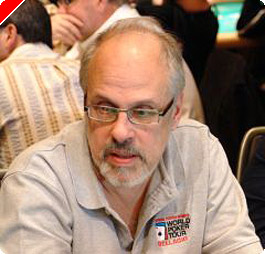 In the article on the ' pot odds and poker ", we saw the application when it s determining if we 'caller '. However, the pot odds can also be used to determine if we bet.
In the article on the ' pot odds and poker ", we saw the application when it s determining if we 'caller '. However, the pot odds can also be used to determine if we bet.By Dess66
In the article on the ' pot odds and poker ", we saw the application when it s determining if we 'caller '. However, the pot odds can also be used to determine if we bet. For example, if we have a draw to the 'nut flush", we know what with upcoming card, we are neglected at about 4: 1. With this in mind, if we were assured that 6 other players will pay our implementation, we should bet because we will win more with this additional bet when we'll our flush than what cost us the times or we'll not.
However, these concepts of "pot odds" applied to the fact of bet are rarer and especially usually less accurate. However, there is an exception, the concept of Sklansky-Chubukov!
The concept by the following premise: if we are on the 'small blind' ($1) that we show our l opponent before betting, cards with what cards and what stack sizes can we go all-in in being assured that the game is + EV, and, even if our opponent play perfectly, either Cabrera when he has the winning hand (in fact(, it s callera there "pot odds", which can occur with a slightly weaker hand than ours because the big blind as there already pay).
Use an example. You have AK. You are on the small blind for $1 (the blinds will of course often be different $ 1, in which case were back to $ 1 (dividing the blinds and the stacks by the value of the small blind so as to reduce it to $1).) So with blinds100-200 and a stack of 2,000, we can easily see that the blinds can be reduced to equivalent l of 1$-2$ which will bring the stacks to 20.
So we have AK, the blinds are 1$-2$. If we push all-in, we will win the $ 3 pot whenever our adversary lie (what it should do with all hands except AK and a pocket), and we will also have some opportunities to win when we get caller. As our opponent will play only 6.5% of hands, so that means that we will win the blinds ($3) 93.5 times out of 100. In addition, 43% chance of winning against AK the range of hands that we callera. I avoided the calculation, but it is mathematically provable that pushing AK all-in in these circumstances will be + EV if our stack is $ 332 and less! You read correctly, push $330 all-in with blinds $ 1-2$ is + EV!
This does not mean that we have to push all in. Play differently may be even more interesting in terms of EV. But it helps that push all in for $ 300 with a $ 3 blinds is better than folder. Folder is an error in this case.
In the case of AK, it seems likely as another way to play will be better to push $ 300 at the centre. But let's imagine that we have a stacks of $ 10 and valet-4 suited. Sklansky-Chubukov teaches us that we must push all in rather than folder valet and 4 suited with $ 13 or less. And except go all-in, there appears not to be d another particularly interesting way to play the hand. Some might argue that "caller" is better that push, perhaps, but any folder can be an option!
On the other hand, I remind that the "move" itself is + EV, even if the opponent plays perfectly. However as the opponent will not perfectly play in real life (because we do not show our cards), it will thus commit errors that make the all in even more + EV. For example, in l example or we have AK and pushing $ 300, not only do we know that l opponent will make an error it call with AQ or other hands that we are fighting (what many will do), but there are strong bet that multiple opponents based a pair of 2, which is another error in the meaning of the fundamental theorem of poker (because it is a favorite)making it probably the move + EV with a stack even larger that $ 332 that the concept tells us!
In summary, the concept of Sklansky-Chubukov gives an amount until that we must push all in rather than folder (under the specific circumstances views). This is "non-negotiable"!
You will find a "cheat sheet" reworked calculations and important figures for most significant hands.
However, these concepts of "pot odds" applied to the fact of bet are rarer and especially usually less accurate. However, there is an exception, the concept of Sklansky-Chubukov!
The concept by the following premise: if we are on the 'small blind' ($1) that we show our l opponent before betting, cards with what cards and what stack sizes can we go all-in in being assured that the game is + EV, and, even if our opponent play perfectly, either Cabrera when he has the winning hand (in fact(, it s callera there "pot odds", which can occur with a slightly weaker hand than ours because the big blind as there already pay).
Use an example. You have AK. You are on the small blind for $1 (the blinds will of course often be different $ 1, in which case were back to $ 1 (dividing the blinds and the stacks by the value of the small blind so as to reduce it to $1).) So with blinds100-200 and a stack of 2,000, we can easily see that the blinds can be reduced to equivalent l of 1$-2$ which will bring the stacks to 20.
So we have AK, the blinds are 1$-2$. If we push all-in, we will win the $ 3 pot whenever our adversary lie (what it should do with all hands except AK and a pocket), and we will also have some opportunities to win when we get caller. As our opponent will play only 6.5% of hands, so that means that we will win the blinds ($3) 93.5 times out of 100. In addition, 43% chance of winning against AK the range of hands that we callera. I avoided the calculation, but it is mathematically provable that pushing AK all-in in these circumstances will be + EV if our stack is $ 332 and less! You read correctly, push $330 all-in with blinds $ 1-2$ is + EV!
This does not mean that we have to push all in. Play differently may be even more interesting in terms of EV. But it helps that push all in for $ 300 with a $ 3 blinds is better than folder. Folder is an error in this case.
In the case of AK, it seems likely as another way to play will be better to push $ 300 at the centre. But let's imagine that we have a stacks of $ 10 and valet-4 suited. Sklansky-Chubukov teaches us that we must push all in rather than folder valet and 4 suited with $ 13 or less. And except go all-in, there appears not to be d another particularly interesting way to play the hand. Some might argue that "caller" is better that push, perhaps, but any folder can be an option!
On the other hand, I remind that the "move" itself is + EV, even if the opponent plays perfectly. However as the opponent will not perfectly play in real life (because we do not show our cards), it will thus commit errors that make the all in even more + EV. For example, in l example or we have AK and pushing $ 300, not only do we know that l opponent will make an error it call with AQ or other hands that we are fighting (what many will do), but there are strong bet that multiple opponents based a pair of 2, which is another error in the meaning of the fundamental theorem of poker (because it is a favorite)making it probably the move + EV with a stack even larger that $ 332 that the concept tells us!
In summary, the concept of Sklansky-Chubukov gives an amount until that we must push all in rather than folder (under the specific circumstances views). This is "non-negotiable"!
You will find a "cheat sheet" reworked calculations and important figures for most significant hands.




